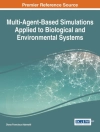Direct potable reuse (DPR) is the planned introduction of recycled water either directly into a public water system or into a raw water supply immediately upstream of a water treatment plant. DPR has inherent risks that differ from treatment of traditional source waters and conventional indirect potable reuse (IPR). In particular, DPR is a more closely coupled system, in which there is less time to monitor process water quality and respond to water quality concerns. This study evaluates how to replace the environmental buffer with engineered storage, called the engineered storage buffer (ESB). The ESB is a storage basin that provides sufficient time to monitor and respond to water quality concerns, called the failure response time (FRT). The ESB can also be designed to provide a measure of redundant treatment at a relatively low cost. It is envisioned as a tool to monitor process performance as it pertains to acute contaminants, with the primary focus on pathogen removal. The ESB is not envisioned as a long-term monitoring approach that could allow for FRT for chronic contaminants that have long analytical turnaround times. This report details how to determine the size of ESB through the use of advanced monitoring technologies and an evaluation of the treatment benefits of a range of processes. It also examines the public s perception of IPR, DPR, and the environmental buffer, using a novel animation and a targeted web-based survey.
Linda Macpherson & Andrew Salveson
Guidelines for Engineered Storage for Direct Potable Reuse [PDF ebook]
Guidelines for Engineered Storage for Direct Potable Reuse [PDF ebook]
Acquista questo ebook e ricevine 1 in più GRATIS!
Lingua Inglese ● Formato PDF ● ISBN 9781780408477 ● Casa editrice IWA Publishing ● Pubblicato 2016 ● Scaricabile 3 volte ● Moneta EUR ● ID 5760680 ● Protezione dalla copia Adobe DRM
Richiede un lettore di ebook compatibile con DRM












